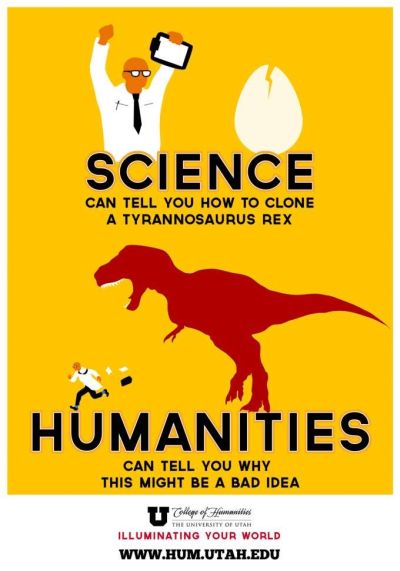STEM, Jurassic Park, and an artistic genius
Mar 10, 2016 by Drew McConnell, Manager of Digital Learning, FIRST
It is often thought that STEM (Science, Technology, Engineering, and Math) subjects are the backbone of innovation — I disagree. Now before you click the 'x' to close this tab and move on to something else, hear me out: I’m not saying that these subjects aren’t valuable. I am a programmer myself and have a degree in Computer Science. My goal is not to belittle the sciences, but rather to paint a more holistic picture of real-world problem solving.
Let's take a moment to marvel at one of the greatest minds to ever grace this planet. A man known for inventions such as a flying machine, musical instruments, and hydraulic pumps — all of which were invented in the 1400s. In his time, this person also devised war strategies and innovations. While he accomplished so many things within the STEM realm, we know him mostly for...his paintings. Wait. Huh?
If you haven't already guessed, this man is Leonardo da Vinci.
Why would a scientific pioneer like da Vinci waste his time painting pictures of the Last Supper or the Mona Lisa or designing extremely large horse sculptures? I think the answer is not that da Vinci was an innovative genius in spite of or even in addition to his creative nature, but because of his creative nature.
When we say someone is innovative, what does that really mean? An innovative person creates something new. If you’re innovative, you can pull ideas from multiple disciplines and bring them together to form something different and (hopefully) improved. In today’s society, there is a desire for our youth to be future problem-solvers and innovators, so schools teach them to think logically, often at the expense of creative subjects. I believe (and, dare I say, I think Leonardo would agree) this is inhibiting their learning rather than empowering it. Yes, they need to know the science behind climate change in order to work against it or the engineering behind urbanization to address overcrowding. But in practice, there is no such thing as a science problem or a humanitarian problem. The two are always intertwined. Take the following poster for example (credit to University of Utah):
This poster is a perfect, albeit silly, illustration of what happens when we isolate disciplines. The scientist clones a Tyrannosaurus Rex as a purely scientific feat, but he fails to take into account the social implications or consequences (see also: Jurassic Park, its sequels, and its reboot Jurassic World).
The same happens with our real-world problems. We cannot address climate change (whether it is a natural process or humanly-caused) without addressing the social and cultural issues that accompany it. And we cannot technologically keep up with urbanization unless we understand and analyze the political and economic factors causing an unprecedented number of people to move into cities.
Undoubtedly these issues require science and technology to solve, but in order to do so we need to understand more than science and technology. We need to know history, understand cultures, and look at our society from a new perspective. Science and technology are not a goal in themselves, but tools to wield for the betterment of humanity. Only once we understand this concept and begin to think like Leonardo da Vinci can we begin to tackle the world's most pressing problems.
Drew McConnell is manager of digital learning for FIRST.
If you have an inspiring story or piece of wisdom that you’ve picked up through your experiences in the FIRST community, please reach out to us at inspire@firstinspires.org and inquire about becoming a guest contributor for Inspire.


Add new comment